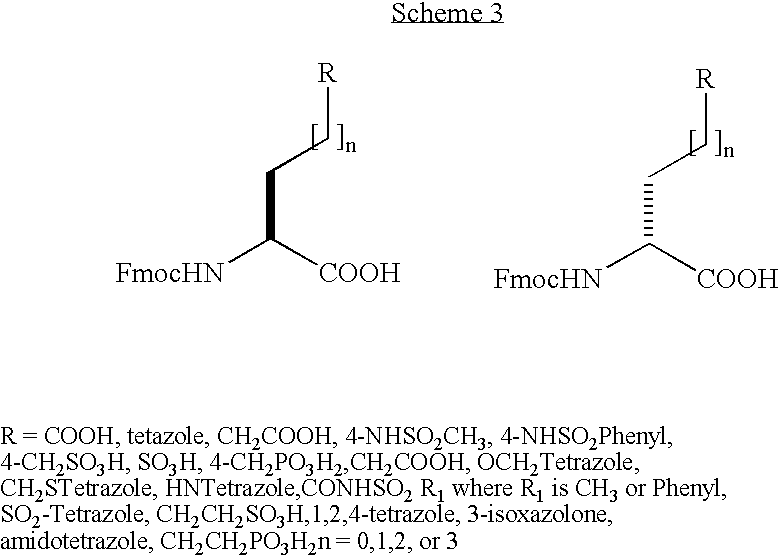Cone snail peptides
a technology of peptides and snails, applied in the field of conotoxin peptides, can solve problems such as side effects and toxic effects, and achieve the effect of being easily synthesized
- Summary
- Abstract
- Description
- Claims
- Application Information
AI Technical Summary
Benefits of technology
Problems solved by technology
Method used
Image
Examples
example 1
Isolation of Conotoxin Peptides
[0084] Crude venom was extracted from venom ducts (Cruz et al., 1976), and the components were purified as previously described (Cartier et al., 1996). The crude extract from venom ducts was purified by reverse phase liquid chromatography (RPLC) using a Vydac C18 semi-preparative column (10×250 mm). Further purification of bioactive peaks was done on a Vydac C18 analytical column (4.6×220 mm). The effluents were monitored at 220 nm. Peaks were collected, and aliquots were assayed for activity. Throughout purification, HPLC fractions were assayed by means of intracerebral ventricular (i.c.v.) injection into mice (Clark et al., 1981).
[0085] The amino acid sequence of the purified peptides were determined by standard methods. The purified peptides were reduced and alkylated prior to sequencing by automated Edman degradation on an Applied Biosystems 477A Protein Sequencer with a 120A Analyzer (DNA / Peptide Facility, University of Utah) (Martinez et al., 1...
example 2
Isolation of DNA Encoding Conopeptides
[0087] DNA coding for conotoxin peptides was isolated and cloned in accordance with conventional techniques using general procedures well known in the art, such as described in Olivera et al. (1996), including using primers based on the DNA sequence of known conotoxin peptides. For example, primers based on the DNA sequence for the Contulakin-G propeptide were used to identify contulakin homologs. The propeptides of these contulakin homologs are homologous on the basis of primer amplification, even though the sequence of the mature toxins are not homologous with the Contulakin-G mature toxin. Alternatively, cDNA libraries was prepared from Conus venom duct using conventional techniques. DNA from single clones was amplified by conventional techniques using primers which correspond approximately to the M13 universal priming site and the M13 reverse universal priming site. Clones having a size of approximately 300-500 nucleotides were sequenced an...
PUM
| Property | Measurement | Unit |
|---|---|---|
| temperature | aaaaa | aaaaa |
| acidic | aaaaa | aaaaa |
| voltage-gated | aaaaa | aaaaa |
Abstract
Description
Claims
Application Information
 Login to View More
Login to View More - R&D
- Intellectual Property
- Life Sciences
- Materials
- Tech Scout
- Unparalleled Data Quality
- Higher Quality Content
- 60% Fewer Hallucinations
Browse by: Latest US Patents, China's latest patents, Technical Efficacy Thesaurus, Application Domain, Technology Topic, Popular Technical Reports.
© 2025 PatSnap. All rights reserved.Legal|Privacy policy|Modern Slavery Act Transparency Statement|Sitemap|About US| Contact US: help@patsnap.com


